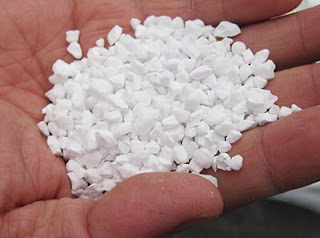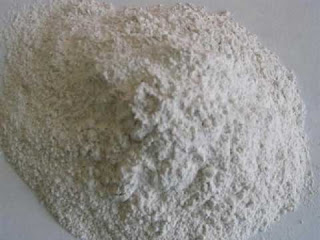Tabular Alumina
Tabular alumina is sintered calcined alumina (See Business Manufacturer). This high temperature process enables the alpha alumina crystals to grow into large grains, of a form resembling tablets, hence “tabular” alumina.
Being a ceramic forming process it also causes the alumina, which has been shaped into spheres for firing, to shrink, resulting in a uniform microstructure with low residual porosity. The spheres are mainly crushed and ground into a range of particle size distributions. Properties are primarily those of alpha alumina with a purity of 99.8%: refractoriness, hardness, chemical inertness, thermal connectivity and dielectric rigidity at high temperature. It also has ceramic properties: high density, low open porosity, dimensional stability, creep and abrasion resistance, exceptional resistance to thermal shock, a surface coarseness which gives good bonding with matrices, and reproducible particle size distribution. Check my reference:
These properties explain its development as a refractory raw material (See Refractory market in Business section), and its use in steel making and in electric furnaces, especially in Japan. It can be used in ceramics as filters for molten metal, fillers for epoxy resins and polyester, inert catalyst supports and heat conductors. There is substantial demand for Tabular alumina: in excess of 500 000 Tpa. Read something about tabular alumina balls: CLICK
15 hours to descend through the furnace, following a heating and cooling cycle. After sintering the balls have low residual porosity because they have shrunk by 20%. They are then crushed, ground, iron is removed magnetically, and finally screened into a range of grain size distributions from 45µm to 10mm.
Resources: highaluminarefractory.COM
Being a ceramic forming process it also causes the alumina, which has been shaped into spheres for firing, to shrink, resulting in a uniform microstructure with low residual porosity. The spheres are mainly crushed and ground into a range of particle size distributions. Properties are primarily those of alpha alumina with a purity of 99.8%: refractoriness, hardness, chemical inertness, thermal connectivity and dielectric rigidity at high temperature. It also has ceramic properties: high density, low open porosity, dimensional stability, creep and abrasion resistance, exceptional resistance to thermal shock, a surface coarseness which gives good bonding with matrices, and reproducible particle size distribution. Check my reference:
| highaluminarefractory.com/tabular-alumina-balls/ |
The Production Process
A pelletizer is used to form balls from fine calcined alumina continuously ground to maximise the green strength and forming capability of the alumina. Use of an organic binder gives temporary cohesion. The addition of boron is possible to reduce soda during heating. The balls are dried before being loaded into the kiln. The key stage is the continuous sintering of the balls, with diameter from 6-26mm, at very high temperatures. In a 9m high vertical shaft kiln, for example, equipped with gas burners, temperatures can exceed 1900°C in the hottest zone. The balls take15 hours to descend through the furnace, following a heating and cooling cycle. After sintering the balls have low residual porosity because they have shrunk by 20%. They are then crushed, ground, iron is removed magnetically, and finally screened into a range of grain size distributions from 45µm to 10mm.
Properties
Tabular alumina is made up of grains of alpha alumina with a diameter of 50 to 300 µm, formed by crystalline growth during sintering. It is dense, >3.55g/cm-3, and only slightly porous, < 5%. Its spherical porosity is mainly closed - water absorption: 1.5% - preventing cracks from spreading. High purity tabular alumina can be produced (99.8% Al2O3, Na2O < 1000 ppm) aided by the absence of non-volatile mineral additions in the preparation of green balls. It is therefore very refractory and not subject to high temperature creep.Resources: highaluminarefractory.COM



评论
发表评论